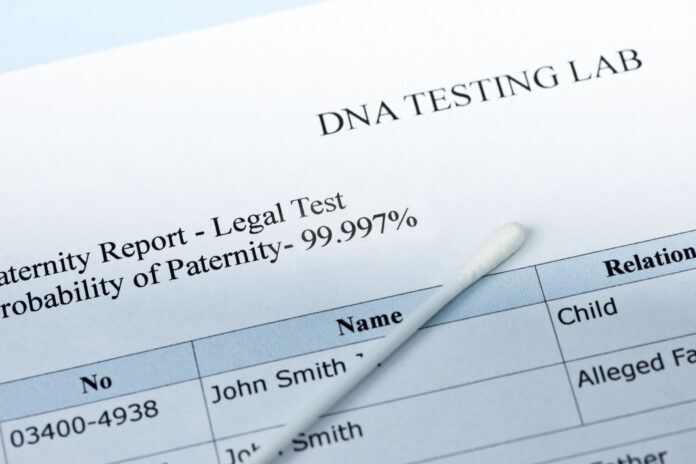The world of genetics is truly fascinating. With breakthroughs and discoveries, science now enables one to decode the building blocks of life. Sometimes, connections between individuals, particularly parentage, are questioned or need verification. Here lies the significance of a special scientific technique to confirm biological relationships, the DNA paternity test.
1. Understanding the Essence of Genetic Heritage Confirmation
When it comes to establishing a biological connection between a child and a presumed father, the validation of genetic heritage is pivotal. This verification process analyses the genetic markers in the samples of the involved individuals. The child’s genetic code is a mix of both parents and by comparing specific markers, scientists can determine with astonishing accuracy whether there’s a familial tie.
This has emotional significance and is critical in legal scenarios such as custody disputes or inheritance cases. Furthermore, the reliability of this verification process has improved over the years, thanks to technological advancements. Not only has the paternity test become more accessible, but it also ensures that individuals can approach it with confidence, knowing that the results are based on a solid scientific foundation.
Additionally, understanding one’s genetic heritage can be instrumental in making informed decisions about health, as certain genetic traits and predispositions can be passed down through generations.
2. The Science Behind the Paternity Test

The process utilises the power of genetics to ascertain familial bonds. The human genome is abundant with repeating segments, and while these segments are almost identical in all humans, the number of repetitions varies among individuals. This variance is where the magic happens.
By focusing on a set number of these repeating segments, it’s possible to establish parentage. The child should have a matching number of repeats with each parent. The more matches, the higher the probability that they are indeed parent and child. This scientific marvel is not only fascinating but provides highly reliable and accurate results.
The intricacies of the human genome are vast, and this technique makes the most of understanding these patterns. The marvel of decoding human genetics and employing it to establish something as profound as parentage speaks volumes about the progress in genetic science.
3. Different Methods and Sample Collection Techniques
There are several ways to conduct the verification, but it’s essential to understand that the core principles remain the same – comparing the genetic markers. The most common method involves collecting cells from a buccal swab from the inner cheek. This is non-invasive and painless. Another method is blood testing. Besides these, there are even options for prenatal verification, which involves testing during pregnancy.
The choice of method can depend on various factors such as the stage of life, the reason for testing, and personal preferences. The advancements in technology have also paved the way for at-home testing kits. However, it is important to note that while at-home paternity tests can be convenient, for legal purposes, a more rigorous and documented procedure may be necessary.
4. Legal Implications and Considerations

Confirming the genetic heritage has immense legal implications. It’s often employed in child support cases, custody battles, inheritance disputes, and even in immigration scenarios. The importance here is not only in establishing the relationship but also in the manner of sample collection and chain of custody of the sample.
For the results to be admissible in court, it’s essential that the collection is conducted under supervised and documented conditions, ensuring that the samples are, without a doubt, from the individuals in question. Moreover, it’s critical to understand the legal standards and requirements in different jurisdictions, as they can vary. Knowing and complying with these requirements is essential to ensure that the testing process and results have legal standing if needed.
5. Psychological and Emotional Aspects
There’s no denying the legal importance of these tests, but it’s imperative to consider the psychological and emotional aspects. Discovering or confirming parentage can be an emotionally charged experience for all parties involved. It’s important to approach the situation with sensitivity and, if necessary, seek counseling or support services to help deal with the emotions and implications that come with the results.
Moreover, it’s important for parents to consider the impact on the child and handle the situation with utmost care and compassion. The results can change the dynamics of family relationships, so having a support system and resources for emotional management is vital.
6. The Ethical Dimension

Apart from the science, legalities, and emotions involved, one must also take into account ethical considerations. The decision to undertake a DNA paternity test should be well-thought-out, with a clear understanding of the potential consequences. The disclosure of test results might affect not only the immediate individuals involved but also extended family members. In certain cases, the revelation could lead to unexpected outcomes such as stigmatisation or relationship strain.
It’s also imperative to consider the privacy and confidentiality of genetic information, especially in an age where data is easily shared. Informed consent, particularly when the test involves minors, is another critical aspect that must not be overlooked. Balancing the right to know one’s genetic heritage with the potential impact on individual and family well-being is a delicate act.
Furthermore, in the case of at-home testing kits, there is a need to ascertain the credibility and ethical standards of the company providing the service. This is because genetic data, once out of one’s hands, could be subject to misuse. Ensuring that the service provider adheres to strict privacy policies is paramount.
In Summary
Unraveling the bonds through a DNA paternity test is not just a scientific endeavor but also a journey through legal pathways, emotional landscapes, and ethical mazes. As individuals seek the truth behind their genetic ties, it is important for them to be well-informed, considerate, and mindful of the broader impact that the revelations could have.
Whether you’re seeking legal clarity, personal closure, or family connection, understanding the intricacies and dimensions of this powerful tool will enable you to make choices that are not only informed but also responsible and empathetic. Ensure that you also consider the privacy aspects and weigh the emotional consequences for all involved before making a final decision







